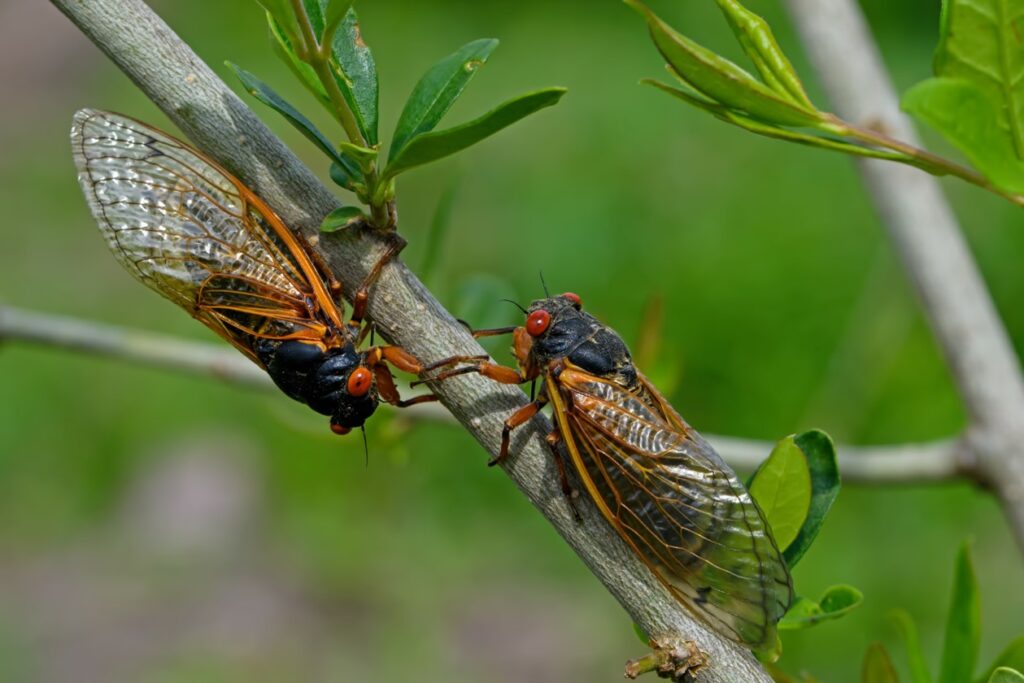On April 8, 2024, a large swath of Indiana was treated to a total solar eclipse, a rare event that last happened in 1869. And in May, parts of Indiana are experiencing another rare occurrence in nature – the emergence of two different cicada broods. In the north and southwest counties of Indiana there is the emergence of Brood XIII (17-year brood) and Brood XIX (13-year brood), a happening last took place in 1803. It will be another 221 years before these two broods sync again (Burga).

Over a trillion red-eyed cicadas across the Midwest will emerge from underground burrows, where four U.S. cicada species live for 13 years and three U.S. species live for 17 years. They will spend the next four to six weeks above ground molting into their adult form and mating before dying off. While large, and many would agree annoying due to their numbers and noise, cicadas are harmless to humans, and they provide birds with an enviable feast. Scientists believe that cicadas emerge in mass numbers as a strategic way to overwhelm predators with so much food that there are plenty of cicadas left to mate and reproduce future offspring. If concerned about young trees, where females usually lay their eggs, it is best to cover trees with mesh or netting with ¼ inch holes (Burga).
The Campus Library offers many specialized science journals that provide scholarly articles on rare natural phenomenon, like cicada brood cycles. Some of the articles we have access to are:
Brood Rising by Kate Wong (Scientific American)
Long-term monitoring and analysis of Brood X cicada activity by distributed fiber optic sensing technology by Sarper Ozharar et al. (Journal of Insect Science)
Morphological Differentiation in Wing Venation Among Broods of 13- and 17-Year Periodical Cicadas by Chris Simon (Evolution)
Periodical Cicada (Homoptera: Cicadidae) Life-Cycle Variations, the Historical Emergence Record, and the Geographic Stability of Brood Distributions by David Marshall (Annals of the Entomological Society of America)
The Effect of Periodical Cicadas on Growth of Five Tree Species in Midwestern Deciduous Forests by James Speer et al. (The American Midland Naturalist)
You can find many of these academic journals through our BrowZine platform. You can also access BrowZine through the A-Z Database List.
To learn more about this rare natural occurrence or other scientific subjects, we can provide assistance with research, using BrowZine or other strategies. Just Ask Us! iueref@iu.edu.
References:
Bartels, M. (2024). A double emergence of periodical cicadas isn’t cicada-geddon—It’s a marvel. Scientific American. https://www.scientificamerican.com/article/a-double-brood-of-periodical-cicadas-will-emerge-in-2024/
Burga, S. (2024). Two broods of more than a trillion cicadas will emerge in the U.S. this year. Time.Com, 1. ProQuest Central Database.


